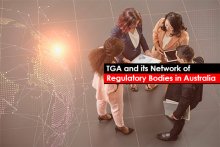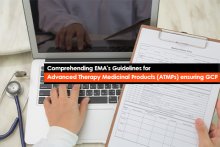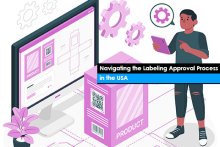Even though the eCTD (Electronic Common Technical Document) format has been in existence for nearly ten years, now it has become a focal point for pharmaceutical, biologic and generic drugs manufacturers because of the US FDA (Food & Drug Authority) mandate stating that all NDAs (New Drug Application), BLAs (Biologics License Applications) and ANDAs (Abbreviated New Drug Applications) must be transitioned and submitted in the eCTD format beginning May 5, 2017. Likewise, Drug Master Files (DMFs), Biological Product Files (BPFs) and other master files too must meet the May deadline for eCTD submissions. All commercial INDs (Investigational New Drugs), however have one year more for transition.
The general eCTD requirements
The eCTD requirements are a set of international specifications for organizing, structuring and submitting dossiers to Regulatory health authorities in an electronic format. One must understand that eCTD is not just an electronic version of a paper dossier but a different system altogether related to how the information is organized and presented.
In the eCTD format, the four major types of dossier content – clinical information, nonclinical information, chemistry & manufacturing information, and labeling and administrative information must be organized in a very specific way, as mandated by the respective health authorities. This requires thoroughness and accuracy in the planning and preparation of the data that needs to be included in the dossier. Another key difference is that the eCTD format enables the Sponsor to present the details more succinctly with the use of hyperlinks and bookmarks.
eCTD and the Benefits
Aligning with FDA-mandated eCTD format by May 5 2017 has many advantages for manufacturers:
- Reduce the costs associated with producing and storing paper dossiers
- Increase the value from electronic document management system deployment
- Streamline workflows in development, Regulatory and marketing departments
- Facilitate collaboration between document authors, reviewers, publishers and external partners
- Re-use documents and submission components efficiently for projects involving applications to global Regulatory agencies
- Enable effective ways to respond to health authority questions
- Support efficient and effective submission lifecycle management
- Provide a convenient mechanism for information sharing during licensing, marketing and other business partnership transactions
Right approach to tackle the eCTD submissions hurdle internally
During the deadlines, the sponsor might face challenges to cope up with requirements which can be effectively managed, if these three key components are managed internally.
- Technology: Right from identifying and purchasing publishing hardware and software with the required capacity, right planning for the time and costs associated with vendor selection, installation and FDA validation must also be considered. Either in-built or external, the tool should be timely upgraded and validated for submission-preparedness.
- Talent: Managing thousands /lacks of documents for submissions, at times, require new talent to operate the system and to produce output that is properly validated as per FDA standards. Besides fresh recruitment, the existing resources – authors, scientists, nonclinical and chemistry and manufacturing experts – need to be trained on new formats and how eCTD works and be acquainted with the best industry practices for writing documents in the required format.
- Processes: Lastly, to align with anticipated automation with electronic format, manufacturers should consider tweaking internal document authoring and preparation processes for effective time management and lower costs.
With FDA eCTD deadline, just around the corner, companies that have still not adopted transition procedures internally, are in their best interest to scout for expert eCTD submissions partner.
What should you consider while choosing a partner?
When selecting an external partner to rely on, the most important factors to be considered are experience, quality and responsiveness. For instance, in case of drug companies, one should assess the number of regulatory applications the external partner has successfully published and submitted, and the extent to which the eCTD dossiers they have submitted have been accepted without any errors or technical glitches. One must also consider if the partner has adequate bandwidth to not only support the sponsor’s initial application, but also the countless number of amendments and post-approval maintenance submissions that may follow. Because a partnership with a regulatory publishing service provider is typically a long-term relationship, particularly if a sponsor is developing more than one product, one must do thorough research before making a commitment.





